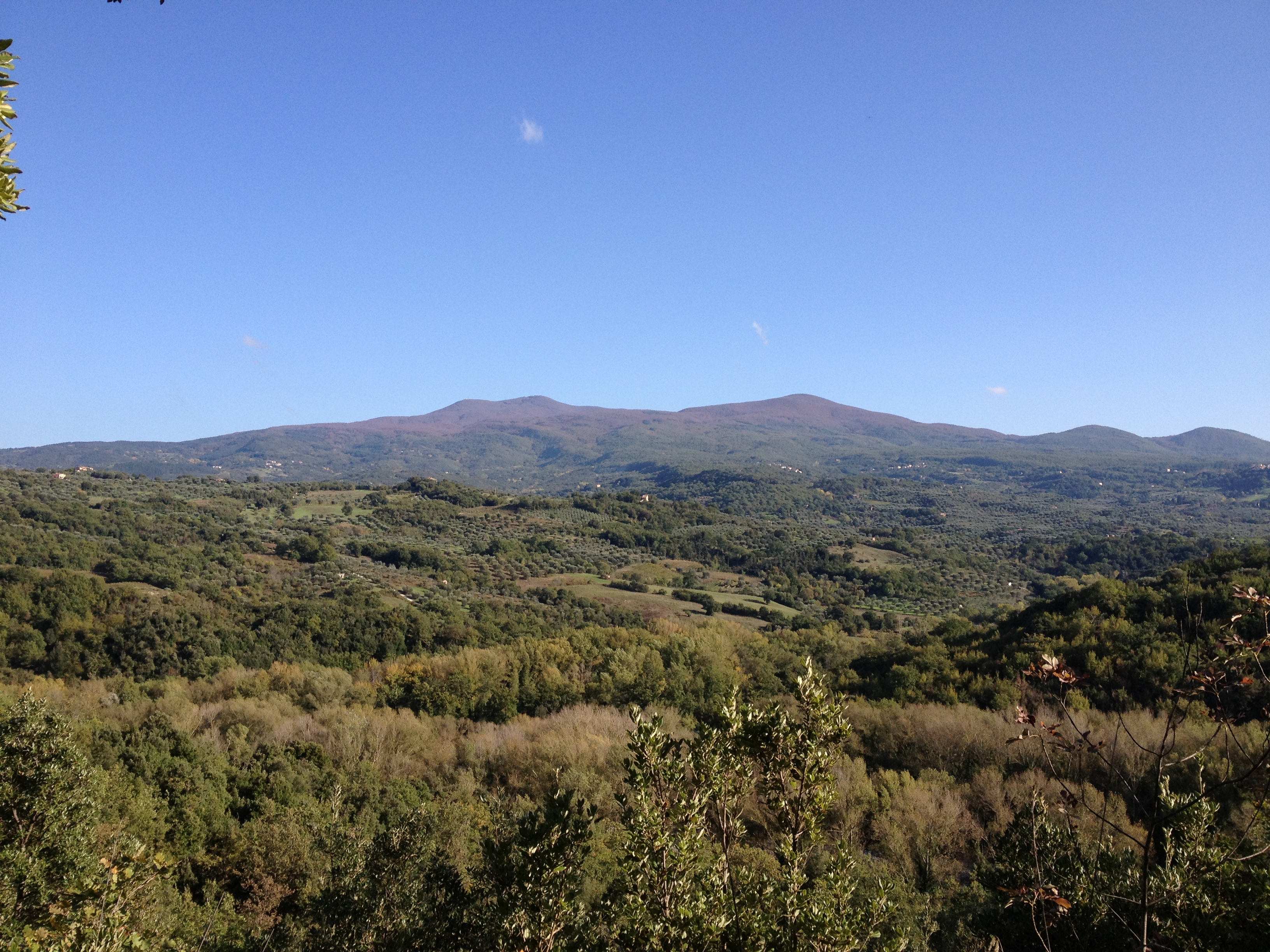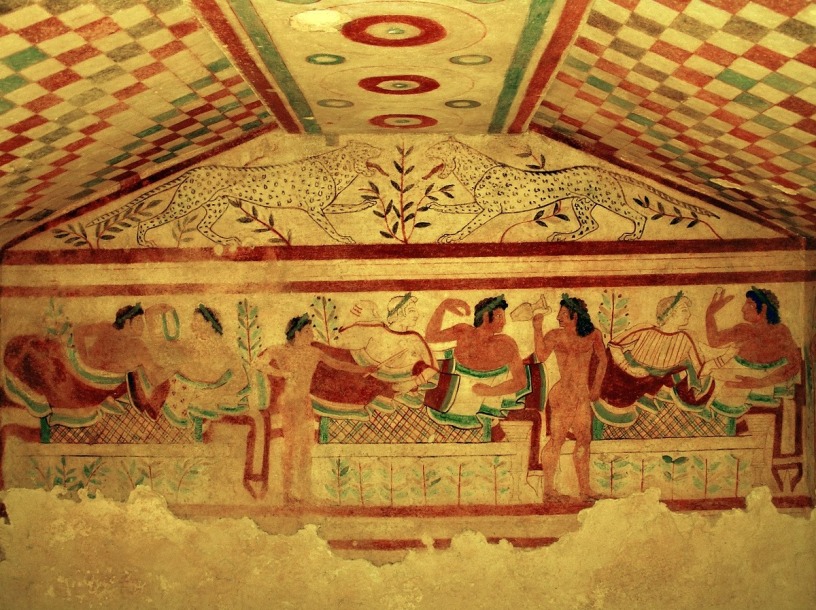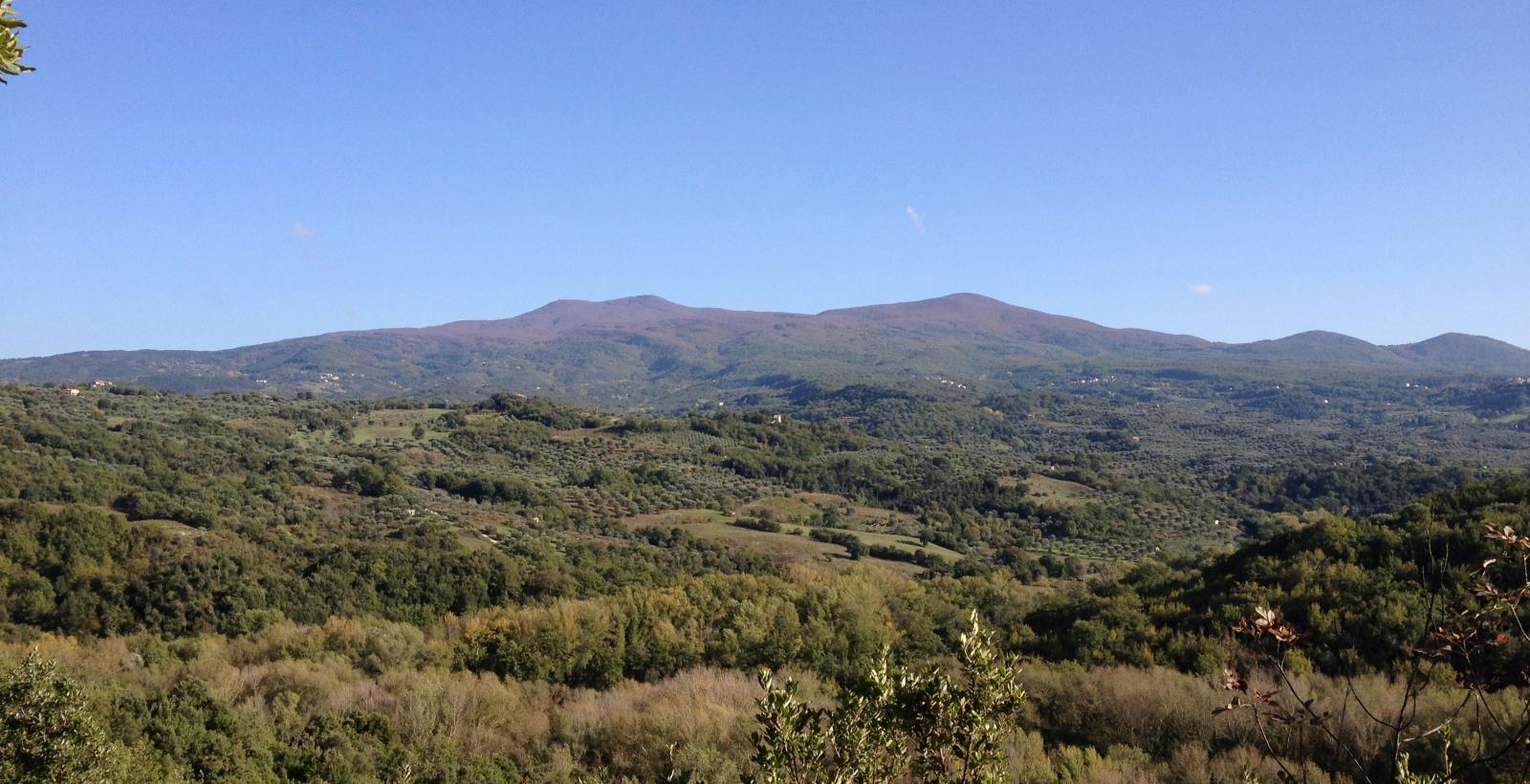Archeology
The finds artistic in the centers of the territory of Mount Amiata they are numerous and some of excellent quality.
The fortunate circumstance represented by the fact geo-political is fallen in the whole of amiatino's area where they crossed and succeeded the Etruscan and Roman civilizations, and later in the Middle Ages have been an important crossroads between the Republic of Siena and the Papal possessions, as well as it is crossed from north to south by the Via Francigena, should be recorded as a sum of congenial reasons to the performance of artistic activities, that came to fruition in the presence of authentic works of art, many of which are preserved in churches, in monasteries or in local castles, other unfortunately emigrated to enrich the museums and art galleries of Florence, Siena and Rome.
The primary influence of Sienese left substantial evidence, commissioned at the time by ecclesiastical powers, but also laity, present and active in various eras centers amiatini. Others were desired and produced by families external Amiata, but who they maintained over time strong ties with that territory.
 Archaeological excavations carried out, especially in recent times on the Amiata or in the valleys below, they have brought out interesting elements and inputs for studies and research, to go up to the customs and life of the pre-Roman settlements and Etruscan. In fact it get, the small number of finds, indicating that in the early history, as well as later in the Etruscan and Roman civilizations, the presence of agglomerations of a certain size would be excluded, at least in the range altitude above 600 meters. The findings affect sparsely and fragmented the lower valleys of the Paglia, of the Formone and of the Orcia, where were possible human activities related to agriculture.
Archaeological excavations carried out, especially in recent times on the Amiata or in the valleys below, they have brought out interesting elements and inputs for studies and research, to go up to the customs and life of the pre-Roman settlements and Etruscan. In fact it get, the small number of finds, indicating that in the early history, as well as later in the Etruscan and Roman civilizations, the presence of agglomerations of a certain size would be excluded, at least in the range altitude above 600 meters. The findings affect sparsely and fragmented the lower valleys of the Paglia, of the Formone and of the Orcia, where were possible human activities related to agriculture.
The highest parts dell'Amiata were visited sporadically, perhaps to exploit occasional certain products of the soil, as dyes (cinnabar and ocher), by communities living in areas not adjacent to its territory amiatino. But above the timber of the forest was a raw material highly attractive to the first inhabitants of the areas downstream of the Amiata, and later by the Etruscans and Romans, allocated in the civitas.
The first signs of a human presence in the slopes of the Amiata, identified in cusps of arrow or tools made of deer antlers, They were found in the town of Castel Del Piano Campogrande, whereas random but great archaeological importance was the discovery of a tool in iron to Campigliola, in the town of Castiglione d'Orcia. In a cave called the "Treasury", in Catarcione, in the town of Abbadia San Salvatore, they were discovered the graffiti of a subject anthropomorphic, appealed by the researchers as "the archer dell'Amiata", but that remains today of uncertain date.
 At the time of the Etruscans the Amiata had as a massive set in a 'border region between powers belonging to the city of Chiusi, Vetulonia, Roselle, Volsinii, and Vulci.
At the time of the Etruscans the Amiata had as a massive set in a 'border region between powers belonging to the city of Chiusi, Vetulonia, Roselle, Volsinii, and Vulci.
In those distant times (we are in the X-IIX century BC.), it is now virtually established the existence of a large structure of worship, witnessed by archaeological finds consisting of a antefix (ornamental frieze of the eaves of a grandiose building) and other architectural terracotta, also of substantial size, in the village of Poggio alle Bandite, near Seggiano. Even in neighboring territories (Montalcino, Montelaterone, Montegiovi, Castiglione d'Orcia, Campiglia d'Orcia and other areas north of the mountain) findings related to the cult, suggest a sort of halo of "sacredness", the center of which was the imposing sanctuary, placed as mentioned in Seggiano, that perhaps has been a sort of primary sacred place at the service of spirituality and Religious Etruscans. In this context, it deserves a dutiful reporting the existence of an epigraph, embedded in the wall of the church of San Clemente in Montelaterone, with inscription dedicated to Giove Ottimo Massimo.
The era of the Romanization of the Etruscan cities, datable to the II-I century B.C., he has left more archaeological evidence in the Amiata. Necropolis or isolated graves, they were found in the Potentino, always near Seggiano, urns to Montesalario, in the municipality of Castel del piano. Near Castiglione d'Orcia and Campiglia the finds become more frequent with a series of urns and gravestones containing inscriptions relevant to burials of noble families.
A votive deposit, particularly conspicuous, for number and quality of objects, has been found in Radicofani, the slope overlooking the Paglia: also here we can assume the existence of a place of worship for the presence, among the items found, of statuettes of Lares, posed perhaps to protect a route that was becoming more and more practiced, which was to become the Via Francigena or Romea.
In 1992 near Abbadia San Salvatore, university researches have shown the presence of numerous stone materials, bricks and ceramic objects, that indicate a network of settlements, located downstream of the village of Abbadia, aimed at a modest agricultural development, favored by the use of the forest, but also supported by the arrival of a class of landed families (the nobilitas of campaign) revitalized by the guidelines of the policy and the residual almost-slave Roman and Etruscan aristocracy. Materials relating to the Capuchin tombs were found in fair amount just above Bagni S. Filippo, and they refer also to the first romanization Etruria.
The Etruscans and the Romans called Mons Tuniatus the mountain Amiata, thereby highlighting a clear designation sacral: Tinia, or Tunia, it was in fact the greatest Etruscan god, and it was quite usual attribution devotional at the top of the mountains, they had to look like hypothetical residence of the object of worship.
(Sources: Cambi, Bianchi Bandinelli, Mazzolai, Ciacci, Pistoi, Kurze, Francovich, G. Valle, Negroni, Citter, Nucciotti).
(Fonti: Cambi, Bianchi Bandinelli, Mazzolai, Ciacci, Pistoi, Kurze, Francovich, G. Valle, Negroni, Citter, Nucciotti)
The fortunate circumstance represented by the fact geo-political is fallen in the whole of amiatino's area where they crossed and succeeded the Etruscan and Roman civilizations, and later in the Middle Ages have been an important crossroads between the Republic of Siena and the Papal possessions, as well as it is crossed from north to south by the Via Francigena, should be recorded as a sum of congenial reasons to the performance of artistic activities, that came to fruition in the presence of authentic works of art, many of which are preserved in churches, in monasteries or in local castles, other unfortunately emigrated to enrich the museums and art galleries of Florence, Siena and Rome.
The primary influence of Sienese left substantial evidence, commissioned at the time by ecclesiastical powers, but also laity, present and active in various eras centers amiatini. Others were desired and produced by families external Amiata, but who they maintained over time strong ties with that territory.
 Archaeological excavations carried out, especially in recent times on the Amiata or in the valleys below, they have brought out interesting elements and inputs for studies and research, to go up to the customs and life of the pre-Roman settlements and Etruscan. In fact it get, the small number of finds, indicating that in the early history, as well as later in the Etruscan and Roman civilizations, the presence of agglomerations of a certain size would be excluded, at least in the range altitude above 600 meters. The findings affect sparsely and fragmented the lower valleys of the Paglia, of the Formone and of the Orcia, where were possible human activities related to agriculture.
Archaeological excavations carried out, especially in recent times on the Amiata or in the valleys below, they have brought out interesting elements and inputs for studies and research, to go up to the customs and life of the pre-Roman settlements and Etruscan. In fact it get, the small number of finds, indicating that in the early history, as well as later in the Etruscan and Roman civilizations, the presence of agglomerations of a certain size would be excluded, at least in the range altitude above 600 meters. The findings affect sparsely and fragmented the lower valleys of the Paglia, of the Formone and of the Orcia, where were possible human activities related to agriculture. The highest parts dell'Amiata were visited sporadically, perhaps to exploit occasional certain products of the soil, as dyes (cinnabar and ocher), by communities living in areas not adjacent to its territory amiatino. But above the timber of the forest was a raw material highly attractive to the first inhabitants of the areas downstream of the Amiata, and later by the Etruscans and Romans, allocated in the civitas.
The first signs of a human presence in the slopes of the Amiata, identified in cusps of arrow or tools made of deer antlers, They were found in the town of Castel Del Piano Campogrande, whereas random but great archaeological importance was the discovery of a tool in iron to Campigliola, in the town of Castiglione d'Orcia. In a cave called the "Treasury", in Catarcione, in the town of Abbadia San Salvatore, they were discovered the graffiti of a subject anthropomorphic, appealed by the researchers as "the archer dell'Amiata", but that remains today of uncertain date.
 At the time of the Etruscans the Amiata had as a massive set in a 'border region between powers belonging to the city of Chiusi, Vetulonia, Roselle, Volsinii, and Vulci.
At the time of the Etruscans the Amiata had as a massive set in a 'border region between powers belonging to the city of Chiusi, Vetulonia, Roselle, Volsinii, and Vulci.In those distant times (we are in the X-IIX century BC.), it is now virtually established the existence of a large structure of worship, witnessed by archaeological finds consisting of a antefix (ornamental frieze of the eaves of a grandiose building) and other architectural terracotta, also of substantial size, in the village of Poggio alle Bandite, near Seggiano. Even in neighboring territories (Montalcino, Montelaterone, Montegiovi, Castiglione d'Orcia, Campiglia d'Orcia and other areas north of the mountain) findings related to the cult, suggest a sort of halo of "sacredness", the center of which was the imposing sanctuary, placed as mentioned in Seggiano, that perhaps has been a sort of primary sacred place at the service of spirituality and Religious Etruscans. In this context, it deserves a dutiful reporting the existence of an epigraph, embedded in the wall of the church of San Clemente in Montelaterone, with inscription dedicated to Giove Ottimo Massimo.
The era of the Romanization of the Etruscan cities, datable to the II-I century B.C., he has left more archaeological evidence in the Amiata. Necropolis or isolated graves, they were found in the Potentino, always near Seggiano, urns to Montesalario, in the municipality of Castel del piano. Near Castiglione d'Orcia and Campiglia the finds become more frequent with a series of urns and gravestones containing inscriptions relevant to burials of noble families.
A votive deposit, particularly conspicuous, for number and quality of objects, has been found in Radicofani, the slope overlooking the Paglia: also here we can assume the existence of a place of worship for the presence, among the items found, of statuettes of Lares, posed perhaps to protect a route that was becoming more and more practiced, which was to become the Via Francigena or Romea.
In 1992 near Abbadia San Salvatore, university researches have shown the presence of numerous stone materials, bricks and ceramic objects, that indicate a network of settlements, located downstream of the village of Abbadia, aimed at a modest agricultural development, favored by the use of the forest, but also supported by the arrival of a class of landed families (the nobilitas of campaign) revitalized by the guidelines of the policy and the residual almost-slave Roman and Etruscan aristocracy. Materials relating to the Capuchin tombs were found in fair amount just above Bagni S. Filippo, and they refer also to the first romanization Etruria.
The Etruscans and the Romans called Mons Tuniatus the mountain Amiata, thereby highlighting a clear designation sacral: Tinia, or Tunia, it was in fact the greatest Etruscan god, and it was quite usual attribution devotional at the top of the mountains, they had to look like hypothetical residence of the object of worship.
(Sources: Cambi, Bianchi Bandinelli, Mazzolai, Ciacci, Pistoi, Kurze, Francovich, G. Valle, Negroni, Citter, Nucciotti).
(Fonti: Cambi, Bianchi Bandinelli, Mazzolai, Ciacci, Pistoi, Kurze, Francovich, G. Valle, Negroni, Citter, Nucciotti)
"When the summit of the mountain slide with an eye on the big green blanket, i have the impression of stroking a prodigious treasure trove where you keep deep memories clinging to the layer of lava dropped from the top three hundred thousand years ago ... I was born in the silence of a medieval village, on the slopes of an extinct volcano and a human frame where it was difficult to discern the line between reality and fairy tale. I grew up wrapped in a silence that made me scared and I avvezzava contacts with the mystery. It was a grace? It was a fortuitous circumstance that has affected my freedom forever? These questions go off in silence and that is in the right place ".
(Padre Ernesto Balducci, by the book La Montagna incantata)





FIND US ON AND
AND 